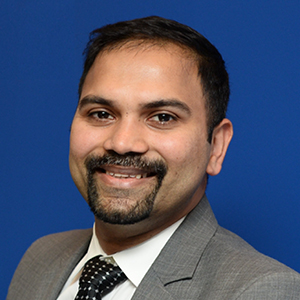Industry Thought Leadership
Transforming Lives With 5G
March, 2020With the COVID-19 pandemic, the world is facing an unprecedented situation. Countries across the globe are in lockdown, and people everywhere are being asked to stop or minimize their physical (social) interactions. Our broadband connections are becoming our lifelines – figuratively and literally: we are using them to get news, connect to our work environments (now all virtual), and for entertainment too.
The world is witnessing an increase in traffic in both wireless and wireline networks. Service providers are required to ensure that their internet infrastructures are up to these new tasks – with enough capacity and ability to deliver all services with high performance under the increased traffic demand.
A comforting thought is that we are at a safe place, technologically speaking, to enable bandwidth intensive applications for massive teleworking by big corporate companies and allow e-learning facilities for schools and so on. 5G network technology provides such bandwidth and capacity for these scenarios and much more for lifestyle as well as industries.
Aji Ed, Chief Technology Officer at Nokia Middle East and Africa, says, “5G with its ultra-high bandwidth and low latency services enable new applications in areas such as e-learning, teleworking, virtual reality, augmented reality and artificial intelligence. This will enable various sectors such as education, energy, healthcare, transport, and entertainment to benefit from various Internet of Things (IoT) use cases enabled by 5G, enhancing operational efficiencies and user experiences in the Middle East and Africa.”
Some operators in the Middle East were among the first ones globally to introduce 5G, while the US, China, and South Korea witnessed strong initial appetite for 5G. “We saw a strong acceleration of 5G launches in the Middle East region in 2019 and the momentum will continue through the year. Nokia continues to engage customers with 5G demos, trials, etc. across MEA to support bringing 5G,” adds Aji.
As of March 23, Nokia had signed 69 5G commercial agreements, with 20 networks now live with 5G services. Nokia is the only 5G vendor with an end-to-end portfolio and a truly global presence. The company has 5G commercial agreements with customers such as Saudi Telecom Company (STC), Zain KSA, Mobily Saudi, du, Ooredoo Qatar, and more in MEA. Globally, we have 5G agreements with Orange France, NTT Docomo, SoftBank, SKT, KT, LGU+, Telia, Vodafone Italy, AT&T, Sprint and T-Mobile US, to name few. Today, Nokia 5G technology is used to provide live commercial services by operators across North America, Asia, Europe and the Middle East.
5G will play a key role in smart city projects, building on the past successes of 4G/LTE. It will more specifically drive the adoption of augmented reality (AR) and virtual reality (VR) to enable a wide range of government services to residents, tourists and drive industrial use cases among others. The video processing capabilities of artificial intelligence (AI) and machine learning (ML) will also have a wide range of applications including public-safety, preventive maintenance and the ability to improve the reliability of complex systems.
Mitigating security concerns
As with any new technology, security has been raised as a concern since the dawn of 5G. Current network security has proven less than adequate due to the challenging nature of 5G networks to support unique and diverse business requirements of various sectors. Aji says, “When it comes to 5G networks, reliability does not only refer to the network infrastructure but also in ensuring high connectivity, infinite capacity and coverage anytime, anywhere. This requires a security makeover of how confidentiality, integrity, and availability will be managed and maintained in 5G networks. The complexity of securing a network has also increased due to the introduction of software-defined networking (SDN) and network function virtualization (NFV) in 5G networks.”
Nokia’s end-to-end security solutions help mitigate these security risks in a three-step process. The company collaborates with 3rd Generation Partnership Project and other specification bodies to influence the security requirements, which are then implemented into all its products by our DFSEC (design for security process). It also has a wide range of network security solutions and services that help operators to automate and orchestrate the security requirements by consolidating network security requirements into a single operations view via Nokia’s SOAR (security, orchestration, analytics, and response) approach. It leverages its best-in-class global threat intelligence repository and automated workflow management to help chief information security officers (CISOs) and chief information officers (CIOs) develop end-to-end visibility and control on their security operations which will become far more critical as the adoption of 5G accelerates.
Thus, during unprecedented scenarios such as COVID-19, telecom networks become critical and lifeline services -- like health and essential services – and it is important to maintain the network capacity and bandwidth to address exponentially increasing traffic demand in a secure way. So, in addition to continuing 5G and fiber access infrastructure rollouts, we may need even more investment in the networks (wireline, wireless, and converged) to make them better and readier for the future.

